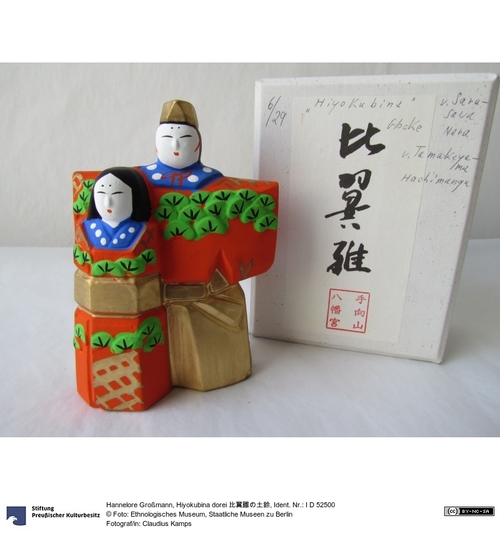Figurenpaar in Zeremonialkleidung des hohen Mittelalters( 比翼, in der Lesung hiyoku, hat zweierlei Bedeutung, einmal "Kimono im Sinne der Tradition; in Verbindung mit hina (Puppe/Figur) die Bedeutung : Symbol für den Kaiserhof.- nach traditioneller Vorlage von Mädchenfest- (Hinamatsuri-) figuren gleicher Art hergestellt; hier jedoch als Kompositfigur. Dazu vorhanden die originale mit Titel und Schrein-Namen versehene Verpackung.
Der Herkunftsort, Tamukeyama hachimangu 手向山八幡宮, ein Shintô-Schrein in Nara, ist auf der Rückseite der Glocke nochmals benannt. (Kommentar: Siegmar Nahser)
Sammler: Großmann, Hannelore
en

